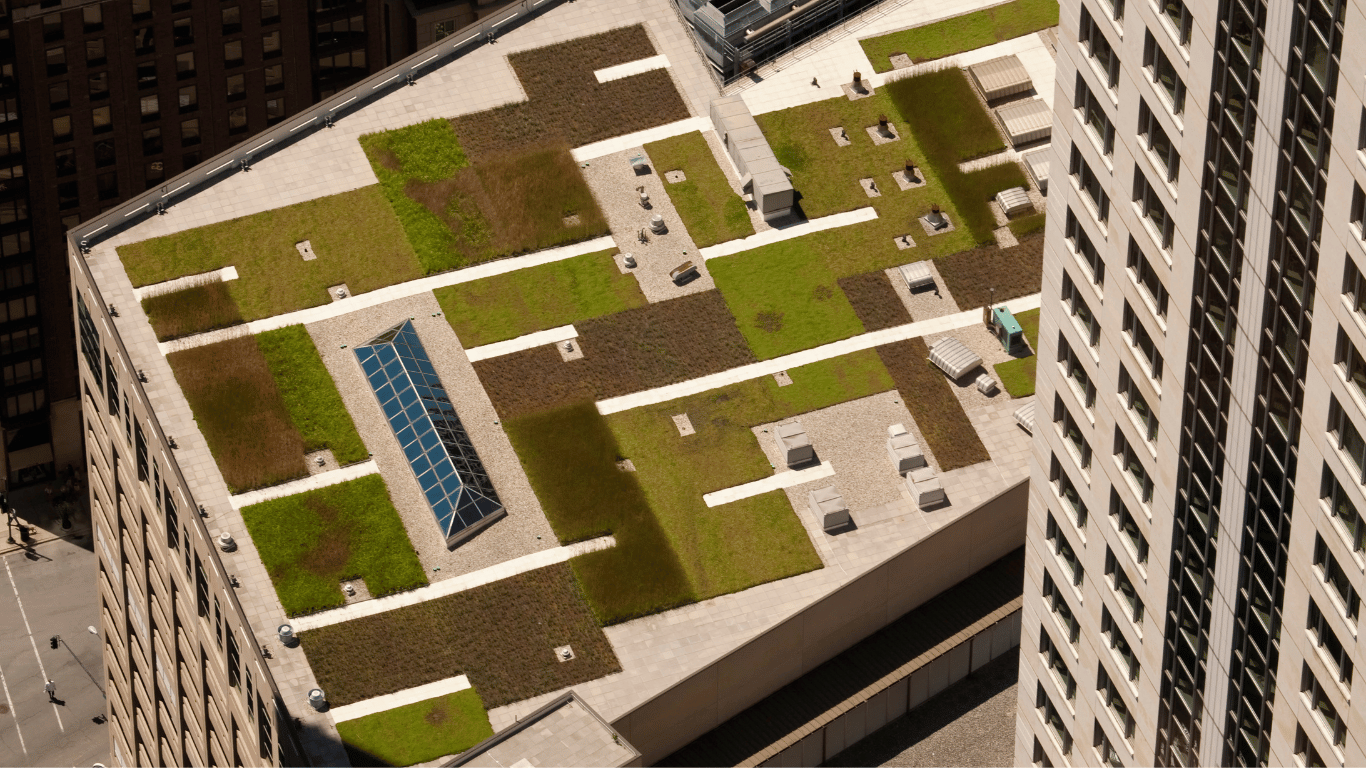The rise of green roofs in urban landscapes is a trend that has been gaining momentum in recent years. As cities continue to expand and the demand for sustainable solutions grows, green roofs have emerged as a viable option for urban development.
Green roofs, also known as living roofs, are essentially vegetated roof covers, with growing mediums and plants taking the place of bare membrane, gravel ballast, shingles or tiles. The number of green roofs has significantly increased in the past decade, particularly in Canadian cities like Toronto and Vancouver, which have implemented policies and programs promoting their installation.
The benefits of green roofs are manifold. They provide a natural habitat for birds and insects, thereby promoting biodiversity in urban areas. They also help to reduce the urban heat island effect, a phenomenon where city temperatures are significantly warmer than surrounding rural areas due to human activities. By absorbing heat and acting as insulators for buildings, green roofs can help lower energy costs and mitigate the effects of climate change.
Moreover, green roofs have a positive impact on water management. They can retain up to 70-90% of the precipitation that falls on them, thereby reducing runoff and the risk of flooding. This is particularly beneficial in urban areas where concrete and asphalt surfaces often lead to waterlogged streets and basements during heavy rainfall.
However, despite these benefits, there are also challenges associated with the installation and maintenance of green roofs. Firstly, the initial costs can be high, deterring many potential adopters. While green roofs can lead to cost savings in the long run, the upfront investment is often a significant barrier.
Secondly, green roofs require regular maintenance to ensure they remain healthy and effective. This includes watering, fertilizing, and weeding, tasks that are often overlooked in the planning stages. Without proper maintenance, green roofs can fail, leading to costly repairs or replacement.
Lastly, not all buildings are suitable for green roofs. Structural considerations must be taken into account, as green roofs are heavier than traditional ones. Older buildings may require additional reinforcement to support the weight of a green roof, adding to the overall cost.
In conclusion, while green roofs offer a host of benefits and have the potential to transform urban landscapes, they are not without their challenges. It is crucial for city planners, architects, and homeowners to consider these factors before deciding to install a green roof. With careful planning and consideration, green roofs can contribute to creating sustainable and resilient cities for the future.
Despite these challenges, the rise of green roofs in urban landscapes is a trend that is likely to continue. As technology advances and more research is conducted, it is expected that the costs associated with green roofs will decrease, making them an increasingly viable option for urban development. As cities continue to grow and the effects of climate change become more pronounced, green roofs represent a promising solution to some of the most pressing environmental challenges of our time.
In the Canadian real estate market, the rise of green roofs represents not only a shift towards more sustainable practices but also a unique selling point for properties. As more people become aware of the benefits of green roofs, demand for properties with these features is likely to increase. For the real estate industry, this represents an exciting opportunity for growth and innovation.
As we look to the future, the rise of green roofs in urban landscapes is a trend that is set to shape our cities and our lives. From providing a habitat for wildlife to cooling our cities and managing our water, green roofs have a significant role to play in creating sustainable and resilient urban environments.
The rise of green roofs is a testament to our ability to innovate and adapt, to find solutions that not only serve our needs but also contribute to the health and wellbeing of our planet. It is a trend that is set to continue, shaping the future of urban landscapes for years to come.


Be First to Comment